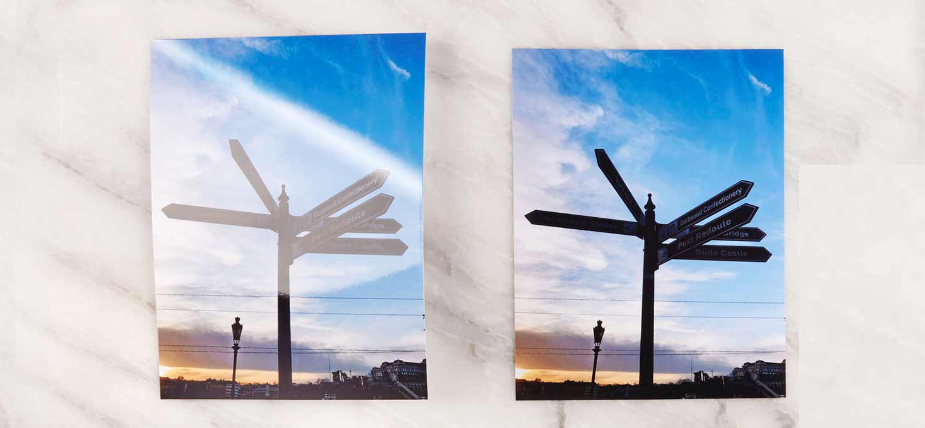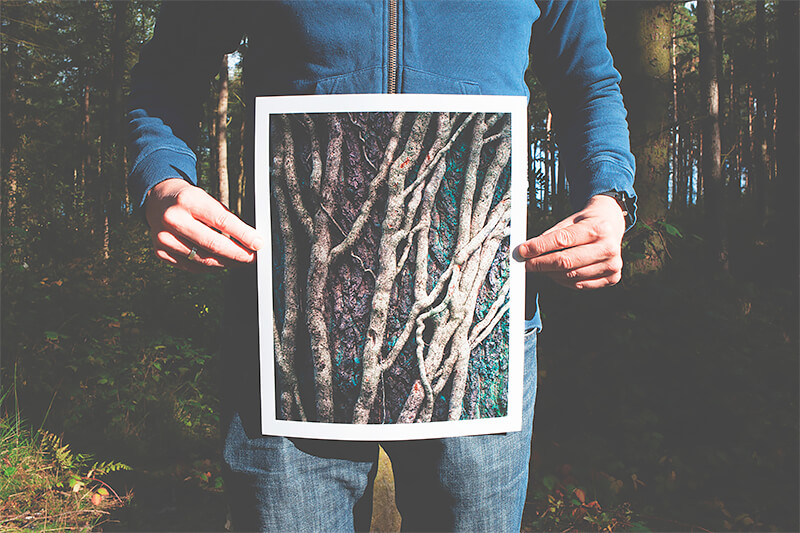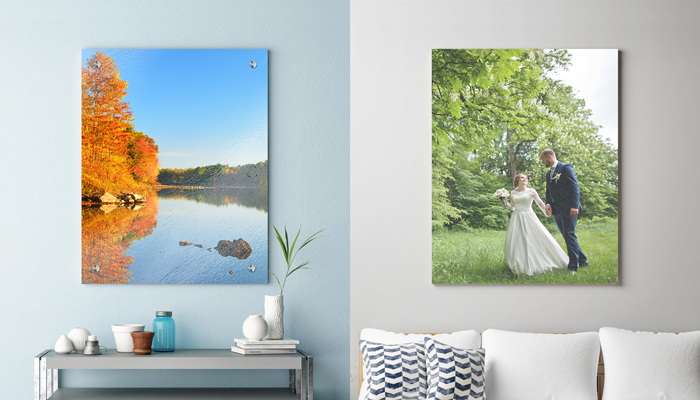Printing your photos is a great way to display them in your home or office, but you may be wondering whether matte or glossy photos are best. Here's a thorough rundown of the pros and cons of each option. But before you start reading, we can just say - it all comes down to your needs and taste!
What are the glossy paper features?

This type of paper is created using a process called supercalendering. In this process, the pulp is placed between two steel rollers that are heated to produce a very smooth surface. The result is a shiny paper with a very high intensity of color.
The main advantages of glossy paper are:
- The colors are more vivid and intense
- It's great for displaying photos with bright colors
- It has a professional look and feel
However, there are also some disadvantages to using glossy paper:
- It can be difficult to write on glossy paper
- Fingerprints and smudges can show up more easily on glossy paper
- It can be more expensive than matte paper
The main difference between glossy and matte photo printing is the surface finish and reflection. Glossy paper has a smooth surface with high reflectivity, which gives images higher contrast levels. Highlights appear brighter, and blacks are stronger due to the reflective nature of the paper.

If your photo has a lot of bold colors, you should use a high gloss finish. Glossy photographic papers make colors more vibrant and increase the contrast of the photo. Also, glossy prints are best for high-definition images - especially if you plan to print them in large sizes. It helps to reduce graininess, making the image appear sharper and more detailed.
What are the matte paper features?
When speaking of matte paper, we usually mean uncoated paper with a dull finish. This kind of paper is not as smooth as glossy paper and doesn't have the same high level of reflectivity. As a result, matte photo prints have lower contrast levels than glossy prints.
So, the general advantages of this type of paper are:
- It's cheaper than glossy paper
- It's easier to write on matte paper
- Fingerprints and smudges are less noticeable on matte paper
Some disadvantages of matte photo paper are:
- The colors might not be as vivid as on glossy paper
- Matte paper is not ideal for photos with bright colors

The matte paper creates a flatter and more classic photo look with less contrast. Because of this, the details in the photo are more visible as well as any textures in the paper. This can give your photos an appealing look.
Professional photographers use matte papers for their fine artworks to manipulate how the photo will look in different lighting conditions. If you want to frame your photos, those printed on matte paper work best.
If you gloss over your prints, the artificial shine will divert light and make it harder to see your photos. This is a significant advantage that matte pictures have in the glossy vs matte argument.
Matte vs glossy photos: what is the best for printing pictures?
Before you take your photos to the framer, you need to decide whether you want glossy or matte prints. The frame choice is important, but it all starts with the print. Moreover, with all of the different types of paper available, it can be hard to decide which one you want. Here, we will go over the matte vs glossy photo printing debate and help you make a decision.
Glossy photos have a shiny finish and are very vibrant. The colors tend to “pop” more with a glossy finish. If you are looking for a photo that will really stand out, then glossy is the way to go. However, keep in mind that glossy photos can also show fingerprints and smudges more easily than matte photos.
Matte photos have a flat finish and tend to have a softer look. The colors are not as vibrant as they are with glossy prints, but they can be just as beautiful. If you are looking for a photo that has a more subtle look, then matte is the way to go. Matte photos are also less likely to show fingerprints and smudges.

The glare from a glossy photo in a glass frame makes viewing the image difficult. For this reason, matte prints are the best choice for framing photos behind glass. If you want to avoid the cost of glass, another option is to frame your photo without it. However, this comes with its own set of problems, such as humidity damaging and warping the photo. Many people solve this issue by laminating their photos onto a flat board or simply hanging them on the wall.
Do matte or glossy photos last longer?
The lifespan of a glossy or matte photo is the same, but it depends on the paper quality and how you take care of them. Unfortunately, fingerprints are more likely to ruin a glossy print, and they're also prone to scratches. On the other hand, matte prints aren't as easy to smudge with fingerprints and are less likely to get scratched - especially when placed behind glass in a frame. Thus, if you're looking for prints that will last a long time, matte might be the best option.
Are black and white photos better glossy or matte?
In addition to the matte vs glossy photos debate that has already been had, it's advisable to go with matte when printing black and white photos. Black and white photography usually aim for a timeless look, as opposed to wanting colors to be popping or schemes being too contrasting like they do with glossy finishes. A lot of photographers also use matte if their photo will have sepia tones. In case you're wondering, sepia is a reddish-brown color that gives black-and-white photos an antique look.
Do different photo styles look differently on glossy and matte paper?
Do you like macro photoshoots or portrait shots? Landscapes or maybe even action shots? No matter what your favorite photography style is, there's a good chance that matte or glossy photos will look great. That being said, some photographers prefer one over the other for certain styles. For example, if you're into portrait photography, a lot of experts recommend using matte paper as it gives skin tones a softer look and feel.
Macro and close-up photography often look best on glossy paper as it makes the colors “pop” more. This is due to the fact that these types of photos often have very vibrant colors. If you're taking landscape shots, it's really up to you whether you want glossy or matte. The same goes for action shots - it all depends on your personal preference.
What about lustre paper?
One more alternative for photographers to print their photos on is lustre paper. Lustre is in between glossy and matte, offering the best of both worlds. Lustre photos have a slight sheen to them and tend to resist fingerprints and smudge better than glossy prints. They also don't glare as much as glossy photos do, making them easier to view.
This type of paper is made by coating the photo paper with a very fine layer of resin. This gives the lustre finish its durability and also makes the colors appear more saturated than they do on matte or glossy paper. Lustre is a great option if you can't decide between glossy and matte photos. It offers the benefits of both finishes without any of the drawbacks.
Finally, if you're still undecided about which finish choosing for your photos, why not try printing them on both glossy and matte paper? This way, you can see for yourself which one you prefer.
Conclusion
As you can see now, there are many things to consider when deciding between matte and glossy photos. It really depends on your personal preferences as to which one you will prefer. If you're unsure, we recommend trying out both finishes to see which one you like best. Thanks for reading!